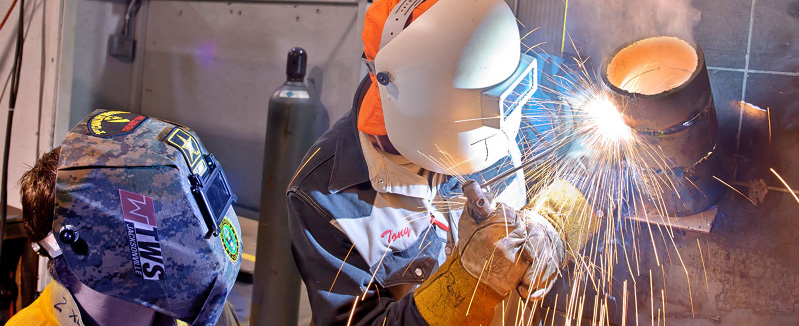Welding is a vital process in numerous industries, from construction and manufacturing to automotive and aerospace. However, the successful execution of welding tasks relies not only on your skill and expertise, but also on the availability and proper utilization of various welding supplies. So, before you get welding supplies for your next welding project, you need to understand the role each of these supplies plays in the process.
10+ welding supplies and their uses
In welding processes, various consumables and equipment are used to ensure safety, efficiency, and quality. Let’s take a closer look at the different welding supply used to weld two metal workpieces together, from welding machines to welding clamps, and understand the role they play.
-
Welding machines
Welding machines are the primary equipment used to generate heat and create an electric arc to weld two metal pieces together. They provide the power and control required for the welding process, allowing you to solidly fuse the workpieces.
-
Welding power sources
Power sources such as transformers, generators, or inverters, supply the electric current required for welding. They ensure that the input power has the appropriate voltage and current settings to support the welding process.
-
Welding electrodes and filler metals
Welding electrodes or filler metals are consumable materials that melt and join the metal pieces being welded. They come in various forms, including coated electrodes, solid wires, or flux-cored wires. You need to choose these welding supplies according to the welding process being carried out.
-
Welding shielding gas
In processes like metal inert gas (MIG) welding and tungsten inert gas welding (TIG) welding, a shielding gas is used to protect the welding area from atmospheric contamination. It prevents oxidation of the metal workpieces and maintains the stability of the weld pool, so you can produce a high-quality weld.
-
Welding consumables
Apart from electrodes and filler metals, other consumables like fluxes and flux-cored wires are also used in some welding processes. They include flux-cored arc welding (FCAW) or submerged arc welding (SAW). Fluxes help you clean, deoxidize and shield the welded metal.
-
Welding helmets
A welding helmet is an essential protective gear that shields your face and eyes from harmful ultraviolet (UV) and infrared (IR) radiation emitted during the welding process. They typically come equipped with darkened lenses that automatically adjust according to the brightness of the arc.
-
Welding gloves
Welding gloves protect your hands from heat, sparks, molten metal and potential burns that could occur during the welding process. They are typically made from leather or other fire-resistant materials.
-
Welding aprons and clothing
Like welding gloves protect your hands, welding aprons and specialized clothing protect your body from sparks, spatter and UV radiation. They are made from flame-resistant materials and cover the torso, arms, and legs. If you spend several hours a day in the welding environment, you may need to add welding aprons to your welding supply kit.
-
Welding respirators
Respirators and welding masks with integrated filters are used to prevent the inhalation of hazardous substances in welding processes that produce fumes, gasses or particulate matter. They ensure clean air supply and protect your respiratory system.
-
Welding curtains and blankets
Welding curtains or blankets are used to create a physical barrier or shield in the welding area. They protect nearby personnel and objects from sparks, UV radiation and welding spatter.
-
Welding clamps and fixtures
Clamps and fixtures are used to hold workpieces securely in place during welding. They ensure proper alignment and prevent distortion or movement during the welding process.
Conclusion
The importance of choosing the right welding supply cannot be emphasized enough. The selection and utilization of appropriate equipment, materials and protective gear significantly impact the safety, efficiency, and quality of welding operations. By understanding the roles and functions of major welding supplies, you can make informed decisions and ensure optimal performance in your welding projects.

